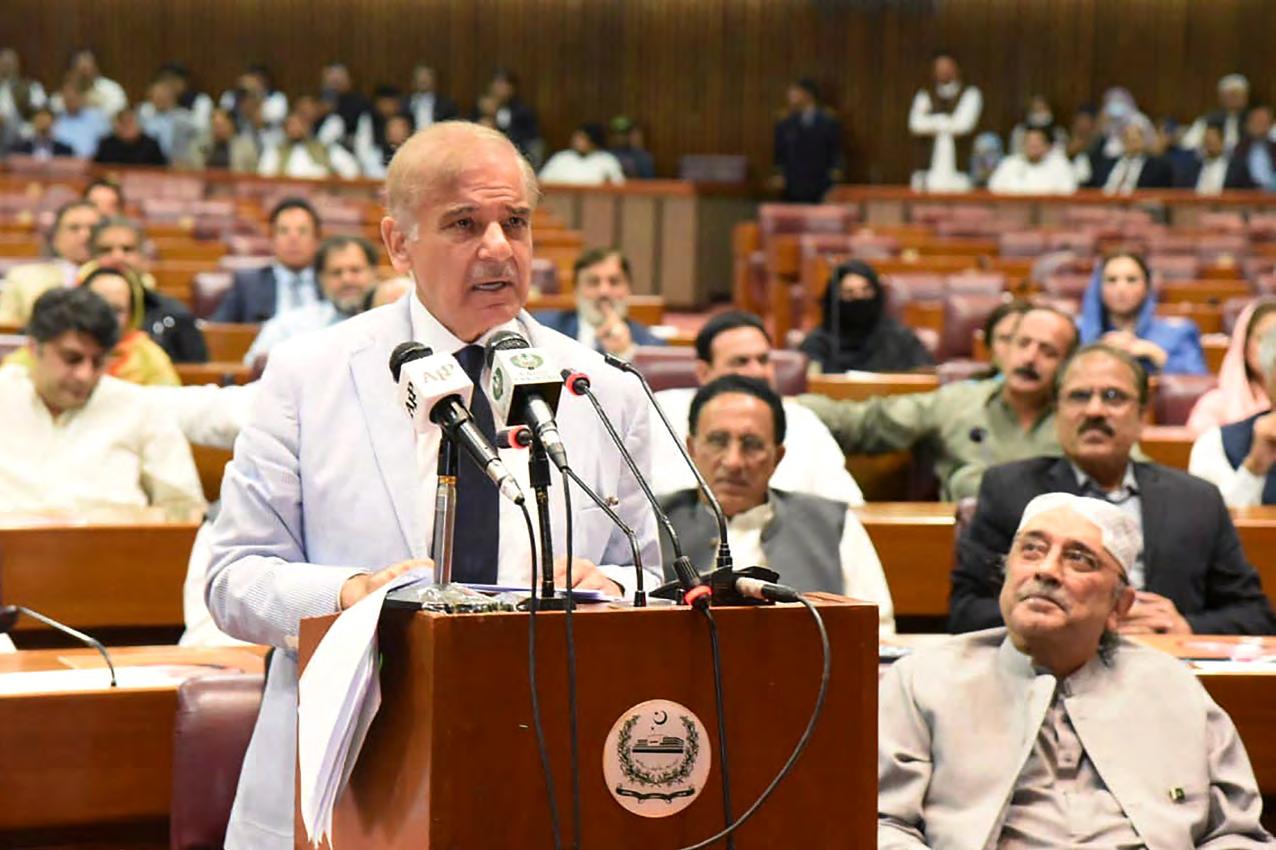
5 minute read
The challenges facing Pakistan’s trade interests
The recent political fiascos may have grave economic repercussions for Pakistan’s international trade
Pakistan’s economy has had quite a grim first quarter this year. The country has witnessed a tremendous increase in political turmoil alongside an ongoing international crisis. With the ongoing blame game surrounding the international geopolitical framework between Pakistan and the United States, it is important for us to comprehend Pakistan’s current economic trade between the eastern and the western blocks to grasp a better understanding of Pakistan’s Geo-Economic standing.
Advertisement
In the March 2021 Islamabad Security Dialogue, Pakistan announced a paradigm shift from Geo-Politics to Geo-Economics, where the foundation of foreign relations would be derived from the economic fortune emanated from the strategic alliances rather than political interests. The recent political dynamics of Pakistan have put the country into an enigma, going against the goal of foreign and domestic policies based on geoeconomics, expunging our relationship with six of our top ten trade partners.
The historical love-hate relationship between the United States of America and Pakistan, whether we like it or not, has proved fruitful to the Pakistani economy, with the United States being our principal trade partner. Out of the top ten export partners of Pakistan, six are western nations, all are part of NATO, while four are Pakistan’s eastern trading partners, namely - China, Bangladesh, Afghanistan, and United Arab Emirates (UAE).
Deep diving into Pakistan’s economic


relations with the United States, the current account balance stands at a $1.8 billion surplus in CY2021 where Pakistani exports to the US were documented to be roughly $5.3 billion while imports stood at an estimated $3.6 billion. Major chunk of this massive export is the Pakistani textile industry clocking in more than $4 billion worth of exports. On the other hand, Pakistan only imported approximately $316 million worth of Machinery, nuclear reactors, and boilers - while the remaining imports mainly consist of Cotton, Mineral fuels, and Pharmaceutical products.
Apart from the United States: Netherlands, Belgium, Italy, Spain, Germany, and the United Kingdom, are crucial trade partners positively impacting Pakistan’s current account. A total of US$13.8 billion in exports were recorded in 2021 with the above mentioned economies, yielding a cumulative trade surplus of US$6 billion.
On the contrary, the all-weather, iron brotherhood between Pakistan and China has not proved to be a profitable endeavor for Pakistan’s trade. While China may be the second largest importer of Pakistani goods & services, it remains on the bottom of the list in terms of net trade. The Trade Deficit with China has grown to a staggering US$17.6 billion, with an year on year increase of 66% from US$10.6 billion in 2020. Imports from China have mushroomed to a massive US$20.6 billion, augmenting from US$12.1 billion in 2020, mainly comprising Electronic equipment imports at US$4.9 billion, Arms & Nuclear Machinery at US$3.3 billion, and Pharmaceutical products at US$1.9 billion. Exports, on the other hand, have also expanded from US$1.8 billion in 2020 to US$3.1 billion in 2021. However, there exists an enormous US$20 billion trade deficit with China that seems frightening at the very least. Thus, this can be deduced that China has enjoyed economic trade with Pakistan more than Pakistan has with China. Approximately one fourth of the total imports of Pakistan is done with china and the future seems daunting.
Majority of the eastern trade partners of Pakistan are importing less and exporting more to Pakistan deeming the relationship to be ineffective for the country’s current account, considering that the top six spots for greatest trade deficits are occupied by China, Indonesia, United Arab Emirates, Saudi Arabia, Qatar, and Kuwait yielding a cumulative trade deficit of US$35 billion in 2021 for Pakistan.
Expanding upon this, Pakistan has had meager trade with Russia since its independence. Due to Pakistan’s relations with the United States, it did not have much of a chance to develop a sustainable relationship with Russia, both during and after the cold war. Although there is an immense potential for oil and gas imports from Russia, Pakistan has never been able to explore this potential due to numerous domestic and geopolitical factors. Only twice throughout history has any prime minister of Pakistan officially visited the Russian federation with the purpose of enhancing trade relations. Although numerous attempts have been made, it has never been able to get a breakthrough in terms of trade.
Pakistan has, however, since the past three years been importing wheat from Russia to the tune of US$300 million in 2020 and US$150 million in 2021. This has been primarily due to certain supply chain impediments in the local wheat production and surplus of demand. The focal point, however, is the fact that Pakistan needs exports and it has not yet been able to devise an export market for Russia, where the gains from any sort of trade deal are titled towards Russia. Despite numerous attempts to develop an ongoing relationship, the current trade deficit of this partnership stands at US$360 million, where Pakistan’s exports are minimal if not less - at US$175 million.
In light of this, the dire need of the hour for Pakistan is to maintain a neutral stance between the ongoing crisis keeping in consideration the underlying economic trade ties with both the western and the eastern nations. Maintaining a sustainable economic relationship with those major export markets of Pakistan and developing a tenable & fruitful alliance with others is of the essence. Any dent on the diplomatic cords with the major export hubs may have severe economic repercussions for Pakistan’s Balance of Payments (BoP) and subsequently its economy. n











